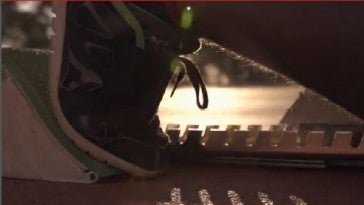Lessons
| Lesson 1 Introduction to discrimination | |
|---|---|
| Australian Curriculum Links | |
ACPPS098 Critique behaviours and contextual factors that influence the health and wellbeing of their communities
|
|
| Integrated Teaching Learning and Assessment | Resources |
Introduce the concept of discrimination. As a class, discuss the term ‘discrimination’ and the places where discrimination may occur. In small groups, students take part in a progressive brainstorm to come up with examples of different types of discrimination.
|
Resource sheet: What is discrimination? Butcher’s paper |
| Lesson 2 Disability rights in sport | |
|---|---|
| Australian Curriculum Links | |
ACPPS089 Evaluate factors that shape our identities and analyse how individuals impact on the identities of others
ACPPS098 Critique behaviours and contextual factors that influence the health and wellbeing of their communities
|
|
| Integrated Teaching Learning and Assessment | Resources |
Pre-viewing activities
Teacher’s Note: In the UN Convention on the Rights of Persons with Disabilities it is recognised that disability is an evolving concept and no fixed definition of disability is provided. This is illustrated by the fact that the Convention’s use of the terms ‘disability sports’, ‘mainstream sport’ and ‘disability specific sport’ are now considered somewhat outdated. ‘Inclusive sport’ is the preferred overarching term, however in order to be consistent with the language of the Convention, references to Convention terms are included in this resource. Viewing Activities
|
Resource sheet: Disability rights and sports Literacy activity sheet: Disability rights and sports Let me win video (3min 14sec) http://youtu.be/8s2VhvivNpQ Activity sheet: Let me win |
| Lesson 3 Understanding the role of the Australian Human Rights Commission | |
|---|---|
| Australian Curriculum Links | |
ACPMP107 Reflect on how fair play and ethical behaviour can influence the outcomes of movement activities
|
|
| Integrated Teaching Learning and Assessment | Resources |
|
Resource sheet: Disability discrimination and making a complaint to the Australian Human Rights Commission Activity sheet: Disability discrimination in sport – case studies. |
| Lesson 4 Making a complaint to the Australian Human Rights Commission | |
|---|---|
| Australian Curriculum Links | |
ACPMP107 Reflect on how fair play and ethical behaviour can influence the outcomes of movement activities
|
|
| Integrated Teaching Learning and Assessment | Resources |
|
Activity sheet: Making a complaint to the Australian Human Rights Commission |
| Lesson 5 Participation of people with disabilities in sport | |
|---|---|
| Australian Curriculum Links | |
ACPPS098 Critique behaviours and contextual factors that influence the health and wellbeing of their communities
ACPMP104 Examine the role physical activity, outdoor recreation and sport play in the lives of Australians and investigate how this has changed over time
|
|
| Integrated Teaching Learning and Assessment | Resources |
|
Activity sheet: Newspaper article template See Australian Paralympic Committee athlete profiles http://www.paralympic.org.au/athletes For examples of newspaper articles, see: Sydney Morning Herald http://www.smh.com.au/ The Australian http://www.theaustralian.com.au/ |
| Lesson 6 Playing modified sports | ||
|---|---|---|
| Australian Curriculum Links | ||
ACPMP099 Perform and refine specialised movement skills in challenging movement situations
|
||
| Integrated Teaching Learning and Assessment | Resources | |
|
|
|
Regular sports equipment Specialised sports equipment e.g. blindfolds, hearing blockers, goalball Wheelchairs for wheelchair basketball See organisations : Wheelchair sports NSW http://wsnsw.org.au/roadshow/school-road-show/ Australian Sports Commission http://www.ausport.gov.au/participating/coaches/tools/coaching_specific_groups/Inclusive |

